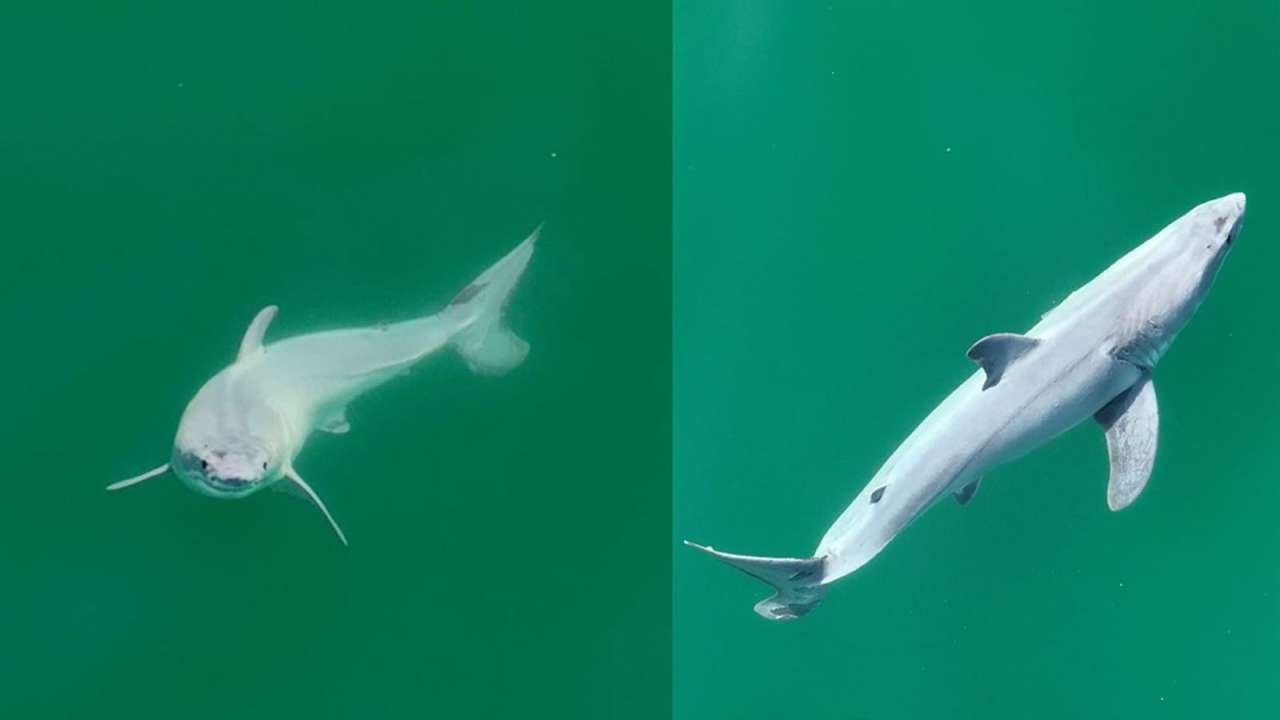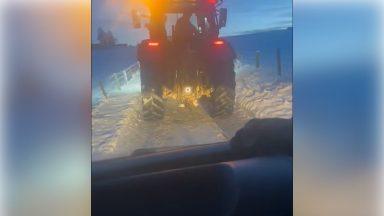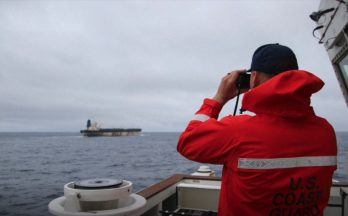Drone footage shot off the coast of Southern California may have revealed the first ever glimpse of a newborn great white shark in the wild.
The 1.5-meter-long white shark was spotted in July last year, 400 meters off the coast of Carpinteria, California, by wildlife filmmaker Carlos Gauna and Phillip Sternes, a doctoral student in the department of biology at University of California Riverside, while they were shooting aerial video and images.
Its pale coloring and size immediately struck the duo as unusual. Adult great white sharks are gray on top and white underneath.
Mr Gauna and Mr Sternes examined the images and video in the viewfinder of the drone camera and noticed a thin, white film covering the shark that was sloughing off the animal as it moved.
“We enlarged the images, put them in slow motion, and realised the white layer was being shed from the body as it was swimming,” Mr Sternes said.
“I believe it was a newborn white shark shedding its embryonic layer.”
While in utero, embryonic sharks feed on unfertilised eggs for protein.
The mothers offer additional nourishment to the growing shark pups with a milk secreted in the uterus.
It’s some of this material that Gauna and Sternes believe gives the shark its unusual coloring.
They documented their observations in a study published Monday in the peer-reviewed Environmental Biology of Fishes journal.
“Given that white sharks produce uterine milk, it is within the realm of possibility that either this fluid or another fluid could have adhered to the shark right before birth,” the authors noted in the study.
If their assessment is correct, it’s the first time that a newborn great white shark has been observed in the wild.
“Where white sharks give birth is one of the holy grails of shark science. No one has ever been able to pinpoint where they are born, nor has anyone seen a newborn baby shark alive,” Mr Gauna said.
“There have been dead white sharks found inside deceased pregnant mothers. But nothing like this.”
An alternative explanation for the shark’s whitish color could be that it was cause by an unknown skin disorder, according to the study.
However, Mr Gauna and Mr Sternes said they believe the most plausible answer is that the creature they observed is a newborn great white.
Its shape and size were indicative of a newborn: thin with rounded fin apexes, the study noted.
In addition, other researchers have suggested this location off the coast of central California is a birthing ground for great white sharks.
Mr Gauna and Mr Sternes also noted in the study that mature sharks were spotted in the same area on the same day and the day before the footage was captured.
“In my opinion, this one was likely hours, maybe one day old at most,” Mr Sternes said.
Nicholas Ray, a researcher at Nottingham Trent University in the UK, who has studied great white shark population dynamics in South Africa, called the sighting “fantastic.”
“This observation is hugely significant and is at the start of scientists’ understanding of the elusive reproductive cycles of this endangered species. It could unlock the door as a new discovery and reinforce the need for greater protection in these areas,” said Mr Ray, who wasn’t involved with this study, in an email.
That the shark pup was filmed so close to the coast could be significant because its age means it was likely born in shallow waters.
Other shark experts believe great whites are born farther out at sea, according to the news release.
Greg Skomal, senior fisheries scientist at the Massachusetts Division of Marine Fisheries and author of the book “Chasing Shadows: My Life Tracking the Great White Shark” said: “While the presence of this young white shark in this area supports this hypothesis, the actual birth was not observed.
“We cannot rule out that the shark, which is quite mobile, could have moved a great distance from the birthing area. Regardless, this is a very exciting observation.”
The observations require “further investigation and additional evidence for support or refutation,” according to the study.
“Nevertheless, in either case, the use of the aerial drone has provided shark science with another interesting set of information,” the study authors added.
Follow STV News on WhatsApp
Scan the QR code on your mobile device for all the latest news from around the country






























